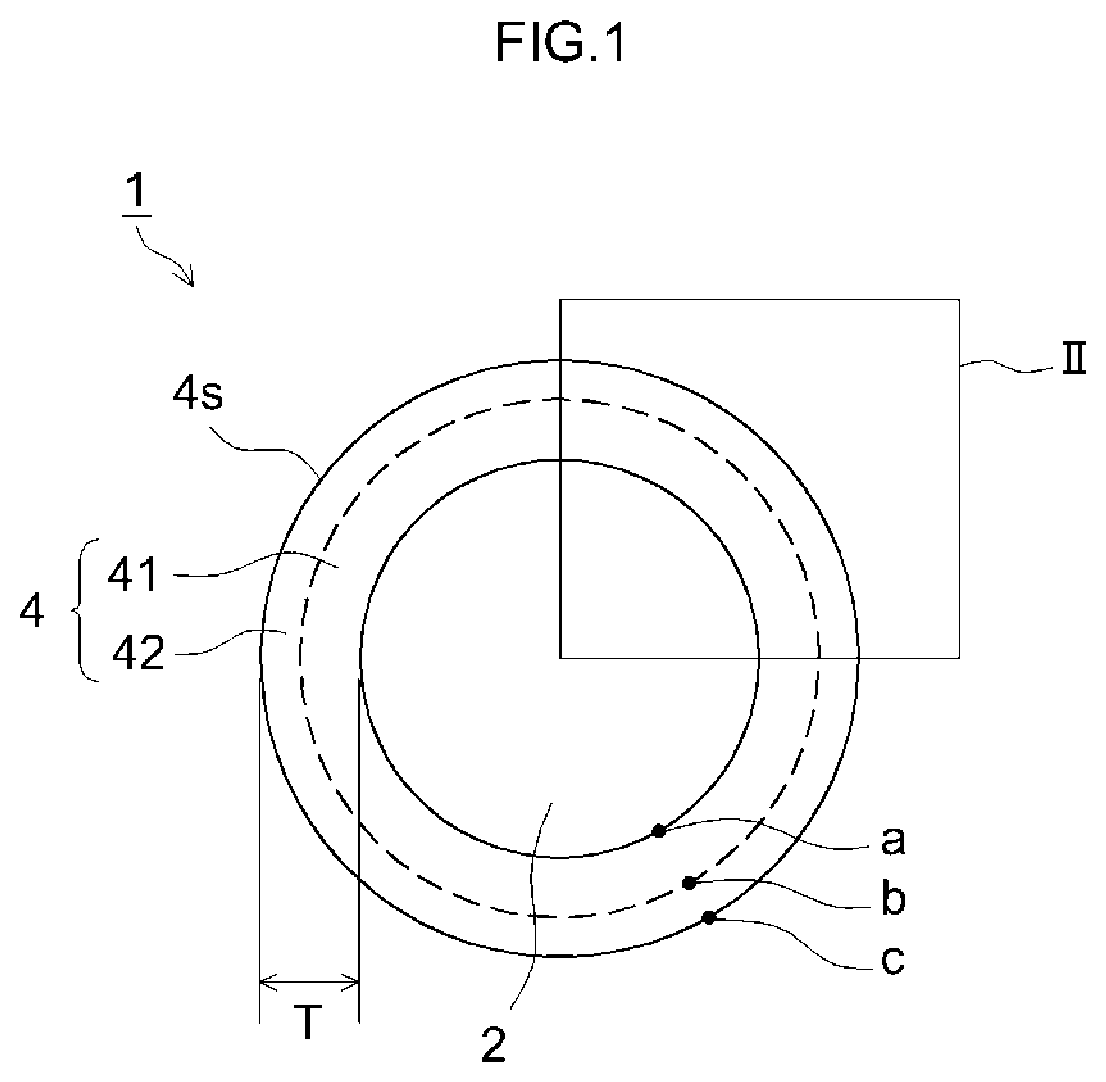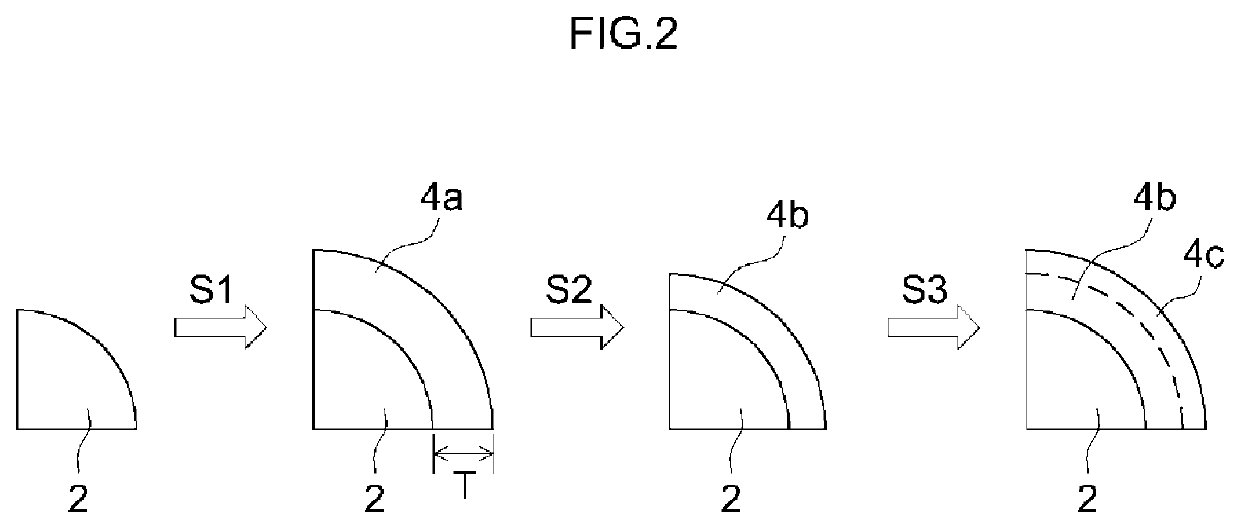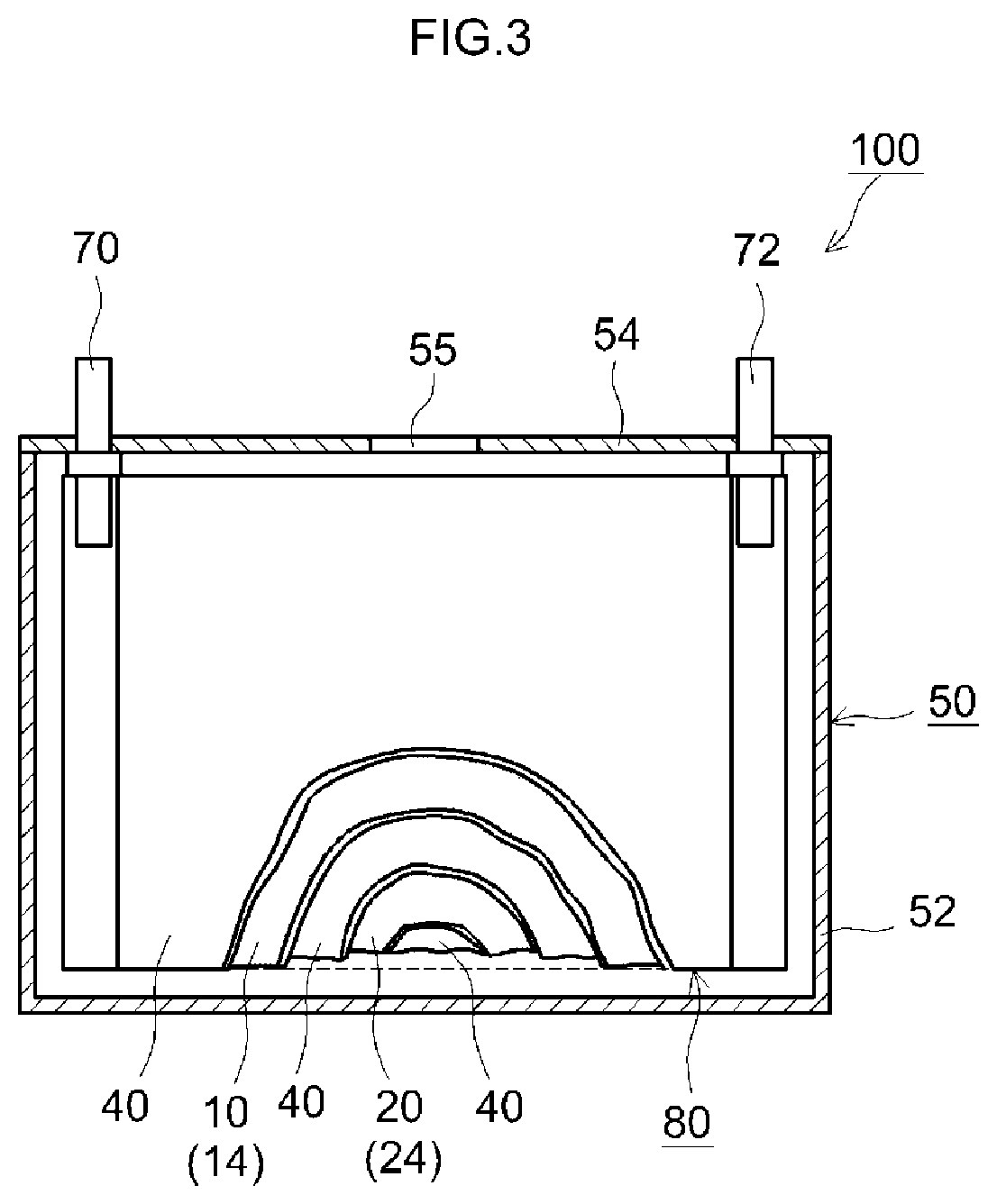Positive electrode material and lithium secondary battery using same
a lithium secondary battery and positive electrode technology, applied in the direction of positive electrodes, active material electrodes, cell components, etc., can solve the problems of increasing resistance in the positive electrode, difficulty in high-rate charge and discharge at 2 c or above, etc., to achieve the effect of suppressing the oxidative decomposition of the electrolyte, increasing the structural stability of the positive electrode active material, and reducing the difficulty of self-discharg
- Summary
- Abstract
- Description
- Claims
- Application Information
AI Technical Summary
Benefits of technology
Problems solved by technology
Method used
Image
Examples
example 1
[0080]Firstly a particulate lithium-nickel-cobalt-manganese complex oxide (layered structure; LiNi0.33Co0.33Mn0.33O2) having an average particle size of 10 μm was prepared as a positive electrode active material (step S0). A sputtering target of Al was used next to sputter Al onto the surface of the positive electrode active material particles, while the positive electrode active material particles were being rotated. Herein DC current was used for sputtering, and the film formation rate was set to 0.1 nm / h. As a result, an Al layer was formed on the surface of the positive electrode active material particles (step S1). Next the positive electrode active material particles with Al layer were thermally treated at 300° C. for 12 hours. As a result, Li was caused to diffuse into the Al layer, to thereby form a Li enriched layer (step S2). Next a 5 mass % hydrofluoric acid aqueous solution was prepared, and the positive electrode active material particles with Li enriched layer were sub...
examples 2 and 3
, Comparative Examples 2 to 6
[0081]In Comparative example 2 a positive electrode material was obtained in the same way as in Example 1, but herein the duration of the thermal treatment in the step S2 was shortened and the duration of the fluorination treatment in the step S3 was likewise shortened. In Comparative example 3 a positive electrode material was obtained in the same way as in Example 1, but herein the duration of the fluorination treatment in the step S3 was shortened. In Comparative example 4 a positive electrode material was obtained in the same way as in Example 1, but herein the duration of the thermal treatment in the step S2 was shortened. In Example 2 a positive electrode material was obtained in the same way as in Example 1, but herein the duration of the thermal treatment in the step S2 was lengthened. In Comparative example 5 a positive electrode material was obtained in the same way as in Example 2, but herein the duration of the thermal treatment in the step S...
examples 4 to 10
[0082]In Examples 4 to 6 respective positive electrode materials were obtained in the same way as in Example 1, but modifying herein the sputtering time and the Al coverage of the step S1. In Examples 7 to 10 positive electrode materials were obtained in the same way as in Example 1 but herein Ti, Zr, Nb and Ta were used as a sputtering target, respectively, instead of Al in the step S1.
[0083]Evaluation of the Positive Electrode Material by XPS.
[0084]The thickness (nm) of the cover of the obtained positive electrode materials, and the coverage (atomic %) of the positive electrode active material surface were measured by XPS. The coverage was calculated on the basis of the following expression, with a coverage element being X: element ratio of X / (element ratio of X+element ratio of Ni+element ratio of Mn+element ratio of Co)×100. The results are given in Table 1.
[0085]Each obtained positive electrode material was analyzed by XPS for the Point a in contact with the positive electrode ...
PUM
| Property | Measurement | Unit |
|---|---|---|
| particle size | aaaaa | aaaaa |
| particle size | aaaaa | aaaaa |
| particle size | aaaaa | aaaaa |
Abstract
Description
Claims
Application Information
 Login to View More
Login to View More - R&D
- Intellectual Property
- Life Sciences
- Materials
- Tech Scout
- Unparalleled Data Quality
- Higher Quality Content
- 60% Fewer Hallucinations
Browse by: Latest US Patents, China's latest patents, Technical Efficacy Thesaurus, Application Domain, Technology Topic, Popular Technical Reports.
© 2025 PatSnap. All rights reserved.Legal|Privacy policy|Modern Slavery Act Transparency Statement|Sitemap|About US| Contact US: help@patsnap.com



